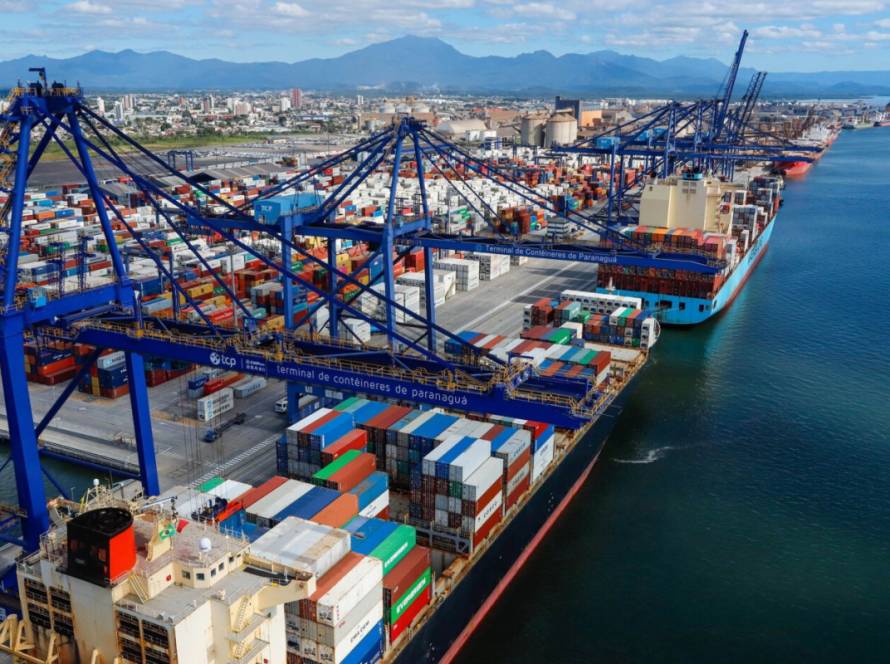Brazil's poultry and swine industries are expected to record positive performances in production, exports and consumption of products, projects the Brazilian Animal Protein Association (ABPA). The data was presented at a press conference held this Wednesday (20), in São Paulo (SP).

President of the Brazilian Animal Protein Association (ABPA), Ricardo Santin: “The global market remains highly demanding for proteins” – Photo: Disclosure
In a semester marked by overcoming the greatest sectoral challenge ever imposed on proteins—the identification of a specific health situation involving a global disease, Highly Pathogenic Avian Influenza—projections indicate the sector's prospects for a return to normalcy, according to ABPA President Ricardo Santin. "We have positive expectations for the end of this year, even given the significant challenges faced by the poultry production sector. The global market remains highly demanding for proteins. The same is true in our domestic market, with projected high consumption for all three proteins," he assessed.
According to ABPA projections, Brazilian egg production is expected to reach 62 billion units in 2025, 7.5% higher than the 57.683 billion units recorded in 2024. Further expansion is expected in 2026, with up to 65 billion units produced, representing an increase of 4.8% over the previous year.
The sector's exports are expected to reach up to 40,000 tons in 2025, representing a growth of 116.6% compared to the 18,469 tons shipped in 2024. For 2026, further advances are expected, with up to 45,000 tons exported, 12.5% more than the volume forecast for this year.
Per capita consumption is expected to increase from 269 units per inhabitant in 2024 to 288 units in 2025 (+7.1%)

Photos: Shutterstock
and 306 units in 2026 (+6.3% over the previous year). “The strong consumption will position Brazil, at the end of 2025, for the first time, among the 10 largest per capita consumers of eggs on the planet,” highlighted Santin.
He emphasized that the projected strong growth in consumption should continue into 2026, expanding the role of protein as the foundation of the country's food security. "Internationally, companies are still evaluating the effects of the tariff hike on exports, but with the expectation of the reopening of markets that are highly demanding of Brazilian protein, such as Chile, maintaining expectations of record exports this year," projected the ABPA president.
Chicken meat
Brazilian chicken meat production is expected to total 15.400 million tons in 2025, a figure up to 30% higher than the total of 14.972 million tons produced in 2024. For 2026, growth is expected, with up to 15.700 million tons, an increase of 2%.

Exports are expected to remain at stable levels, with a small drop of up to 2%, projecting up to 5.200 million tons exported in 2025 (compared to 5.295 million in 2024) and up to 5.500 million in 2026, an increase of 5.8% over the previous year.
In the domestic market, chicken meat availability could reach up to 10.2 billion tons in 2025, compared to 9.678 million tons in 2024, an increase of 5.41 TP4Q. Volume is expected to remain stable in 2026.
As a result, per capita protein consumption is expected to increase from 45.5 kg per capita in 2024 to 47.8 kg in 2025 (+5.1%), remaining at the same level in 2026. "The year was marked by overcoming the biggest crisis in the history of the poultry sector, with the identification of avian influenza on a commercial farm. The situation was isolated and has already been overcome, and most of the temporarily suspended markets have already reestablished exports," Santin emphasized.
However, the ABPA president reinforced that negotiations are ongoing and, as a result, the positive export performance is expected to continue, close to that achieved in 2024. "Production remains strong thanks to a demanding domestic market, with per capita consumption returning to historical levels of around 47 kilograms," Santin points out.
Pork
For pork, national production is expected to reach 5.450 million tons in 2025, an increase of 2.7% over the 5.305 million tons produced in 2024.
Exports are expected to reach 1.450 million tonnes in 2025, compared to 1.353 million tonnes shipped in 2024, with an increase of 7.2%.
shipped in 2024, with an increase of 7.2%.
Domestic availability of the protein is expected to reach around 4 million tons in 2025, compared to 3.952 million tons in the previous year, representing an increase of 1.2%.
Per capita consumption is expected to increase from 18.6 kg per inhabitant in 2024 to 19 kg in 2025, a growth of 2.2%. "Brazil's pig industry is expected to reach new levels of production, consumption, and exports in 2025, all at record levels. In this scenario, the reconfiguration of the Brazilian export market, with the leadership of the Philippines and the rise of Mexico, Singapore, and South American nations, should strengthen Brazil's position in the global rankings," emphasized Santin.





